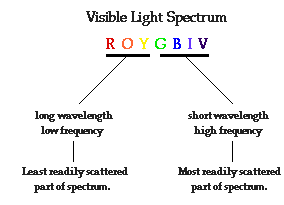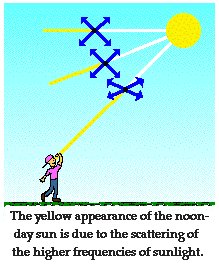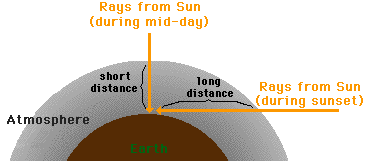Her mother's lack of supervision enabled several male relatives and friends to sexually abuse Winfrey, causing her to run away on many occasions. At the age of fourteen, she gave birth to a premature baby, who died shortly after birth.
Winfrey, now faced with a threat of being sent to a children’s home, moved to Nashville to live with her father and his wife, Zelma. Her father was to provide her with the discipline that was lacking in her life.
Her father, Vernon, placed much importance on education, which resulted in Winfrey becoming an honours student at high school. During this time, she was voted Most Popular Girl, joined her high school speech team, and placed second in the nation in dramatic interpretation. She also won an oratory contest, which secured a full scholarship to Tennessee State University. Winfrey also worked at a local radio station during her studies.
After graduating, she accepted a job offer from Nashville's WLAC-TV and in so doing became the youngest news anchor at the station. In 1976, she moved to Baltimore's WJZ-TV to co-anchor the six o'clock news.
In January 1984, Winfrey moved to Chicago to host "A.M. Chicago" for WLS-TV. In less than a year, the show expanded to one hour and was renamed The Oprah Winfrey Show. It entered national syndication in 1986, becoming the highest-rated talk show in television history. In 1988, she established Harpo Studios, a production facility in Chicago, making her the third woman in the American entertainment industry (after Mary Pickford and Lucille Ball) to own her own studio.
Oprah made her acting debut in 1985, when she starred in Steven Spielberg's 'The Color Purple'. Her performance in the film earned her an Academy Award for Best Supporting Actress and nominations for a Golden Globe for Best Supporting Actress.
'The Oprah Winfrey' show is still highly successful. Winfrey has also written six books and produced the film of the novel 'Beloved'. She has received many awards for her broadcasting and humanitarian work. She is also known for her repeated dramatic weight loss and gain.
She followed this up with a number of television movie appearances and voice roles for feature films, before returning to the big screen in 1998 opposite Danny Glover in 'Beloved' based on the Pulitzer Prize-winning novel by Toni Morrison. Directed by Jonathan Demme, the film was produced by her studio Harpo Productions.
Thanks to her immense influence, the mere association with the global superstar has been deemed to have advantages, which led to the coining of the phrase the "The Oprah Effect". A mention of a product on her show helped to turn many no names into brand names, with authors among those who benefitted through Oprah's Book Club.
She tested the power of the Oprah Effect in politics when she endorsed US presidential candidate Barack Obama in the 2008 presidential election, the first time she made such a move. Research by economists at the University of Maryland revealed that the move delivered over one million votes to Obama.
'The Oprah Winfrey' show continued to be a success, allowing her to net high profile celebrities, including the late Michael Jackson, whose rare prime-time interview became one of the most watched events in American television history with a viewership of 36.5 million people.
Known for her repeated dramatic weight loss and gain, Oprah has received many awards for her broadcasting and humanitarian work and her personal wealth was estimated by Forbes in September 2010 to be over $2.7 billion.
When The Oprah Winfrey Show ends on September 9, 2011, Oprah will still partake in the rapidly shifting and converging media field through The Oprah Winfrey Network (OWN), which launched on January 1, 2011.
In her final season of her talk show, Oprah made ratings soar when she revealed a family secret: she has a half-sister named Patricia. Oprah's mother gave birth to a baby girl in 1963. At the time, Oprah was 9 years old, and living with her father. Lee put the child up for adoption because she believed that she wouldn't be able to get off public assistance if she had another child to care for. Patricia lived in a series of foster homes until she was 7 years old.
Patricia tried to connect with her birth mother through her adoption agency after she became an adult, but Lee did not want to meet her. After doing some research, she approached a niece of Winfrey's, and the two had DNA tests done, which proved they were related.
Winfrey only learned of her sister's existence a few months before she made the decision to publicize the knowledge. "It was one of the greatest surprises of my life," Winfrey said on her show.
Since 1992, Winfrey has been engaged to Stedman Graham, a public relations executive. The couple lives in Chicago, and Winfrey also has homes in Montecito, California, Rolling Prairie, Indiana, and Telluride, Colorado.
 E been reconstructed with a good approximation of the original vegetation. Clues came from Tycho's own records. In a other part of the garden, the museum shows 150 gardenplants known in Denmark during the renaissance. Improvement of the vegetation is carried on continuously in co-operation with the Swedish University of Agricultural Sciences.
E been reconstructed with a good approximation of the original vegetation. Clues came from Tycho's own records. In a other part of the garden, the museum shows 150 gardenplants known in Denmark during the renaissance. Improvement of the vegetation is carried on continuously in co-operation with the Swedish University of Agricultural Sciences.


 The laboratory in the basement was very well equipped. There were 16furnaces for chemical, medical and alchemical experiments. Some of the furnaces were connected to distillers whose cooling pipes went out of the windows and back into the laboratory. Tycho largely held the results secret, but we know that he spent most of the time developing medicines.
The laboratory in the basement was very well equipped. There were 16furnaces for chemical, medical and alchemical experiments. Some of the furnaces were connected to distillers whose cooling pipes went out of the windows and back into the laboratory. Tycho largely held the results secret, but we know that he spent most of the time developing medicines.






